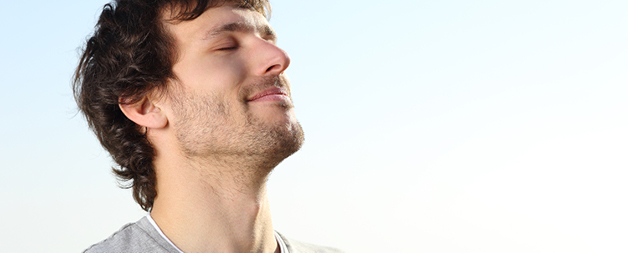
Deep Breathing
When we feel stressed or anxious, our body responds in a variety of ways, symptoms that are commonly referred to as the stress response. One of these responses is a noticable change to your breathing patterns, where they become shallow and rapid, heart rate increases, and muscles become tense. Learning good breathing techniques that counter these stress responses is a great way to counter a part of the stress response with one centred around relaxtion. The goal is to allow your breathing to become deeper and slower, and in turn, cause the symptoms of anxiety to fade away.
Give this a try:

Sit back or lie down in a comfortable position. Close your eyes, if you’re comfortable to do so. For the first few times, you may benefit from placing a hand on your stomach. If you breathe deeply enough, you should notice it rising and falling with each inhalation and exhalation.
- Inhale. Breathe in slowly through your nose for 4 seconds.
- Pause. Hold the air in your lungs for 4 seconds
- Exhale. Breathe out slowly through your mouth for 6 seconds. Tip: Pucker your lips, as if you are blowing through a straw, to slow your exhalation.
- Repeat. Practice for at least 2 minutes, but preferably 5 to 10 minutes.
A few tips:
- If it isn’t working, slow down! The most common mistake is breathing too fast. Time each step in your head, counting slowly as you do so.
- Counting out your breaths serves a second purpose. It takes your mind off the source of your anxiety. Whenever you catch your mind wandering, simply return your focus to counting.
- The times we use for each step are suggestions, and can be lengthened or decreased. Lengthen the time if it feels natural to do so, or decrease the time if you feel discomfort.






Comments